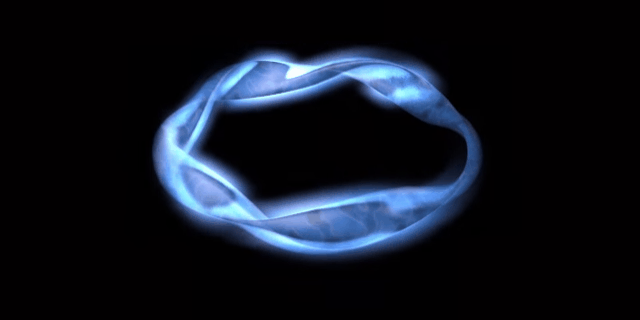
Unlocking Nuclear fusion holds the key to a nearly limitless supply of clean energy, but so far, scientists have spent nearly 60 years on the puzzle with very little progress. Opened last year, Germany’s Wendelstein 7-X nuclear fusion reactor offers the closest functional solution. The reactor uses a complex design called the stellerator, and it successfully contained a scorching hot blob of helium plasma. One year later, scientists finally verified that the design functions as intended.
A team of researchers from the US and Germany has just confirmed that the Wendelstein 7-X (W 7-X) stellarator is producing the super-strong 3D magnetic fields as predicted by its design, with a margin of error less than one in 100,000.
“To our knowledge, this is an unprecedented accuracy, both in terms of the as-built engineering of a fusion device, as well as in the measurement of magnetic topology,” the researchers write in Nature Communications.
While this may not sound like the most exciting news, it’s quite significant in the grand scheme of nuclear fusion design, as the magnetic field is the only thing capable of trapping the long enough to sustain nuclear fusion.
Nuclear fusion generates massive amounts of energy without radioactive byproducts by fusing atoms together at high temperatures rivaling those at the center of the sun. Theoretically, fusion reactors provide endless energy with using nothing more than seawater as fuel.
By contrast, the more familiar nuclear fission refers to the energy production process achieved within existing nuclear reactors by splitting atoms into smaller neutrons and nuclei. Jumpstarting the process relies on specific elements and yields radioactive material.
Achieving controlled nuclear fusion depends on duplicating and controlling balls of plasma at temperatures upward of 180 million degrees Fahrenheit (100 million degrees Celsius) — replicating such conditions on Earth is an advanced technological feat, the say the least.
Multiple nuclear fusion designs have sprung up within the last few years offering hope, but none proved as promising as the W 7-X. Instead using 2D magnetic fields to stabilize plasma—as is the case in traditional tokamak reactors—the W 7-X achieves similar results using twisted 3D magnetic fields independent on electrical currents.
Despite successfully controlling helium plasma back in December 2015 and hydrogen plasma this past February, scientists have yet to demonstrate that the magnetic field was working correctly—until now.
To measure its function, a joint team made up of researchers from the US Department of Energy and Max Planck Institute of Plasma Physics in Germany sent an electron beam along the magnetic field lines inside the reactor. Using a fluorescent rod, the team created light in the shape of fields demonstrating that the magnetic cage functions as intended.
“We’ve confirmed that the magnetic cage that we’ve built works as designed,” said one of the lead researchers, Sam Lazerson from the US Department of Energy's Princeton Plasma Physics Laboratory.
Regardless of the accomplishment, W 7-X hasn’t generated any electricity; it’s merely a proof of concept to show the stellerator design could work. Now, researchers plan to use deuterium in place of hydrogen and produce actual fusion by 2019.
Source: Sciencealert
Advertisement
Learn more about Electronic Products Magazine





